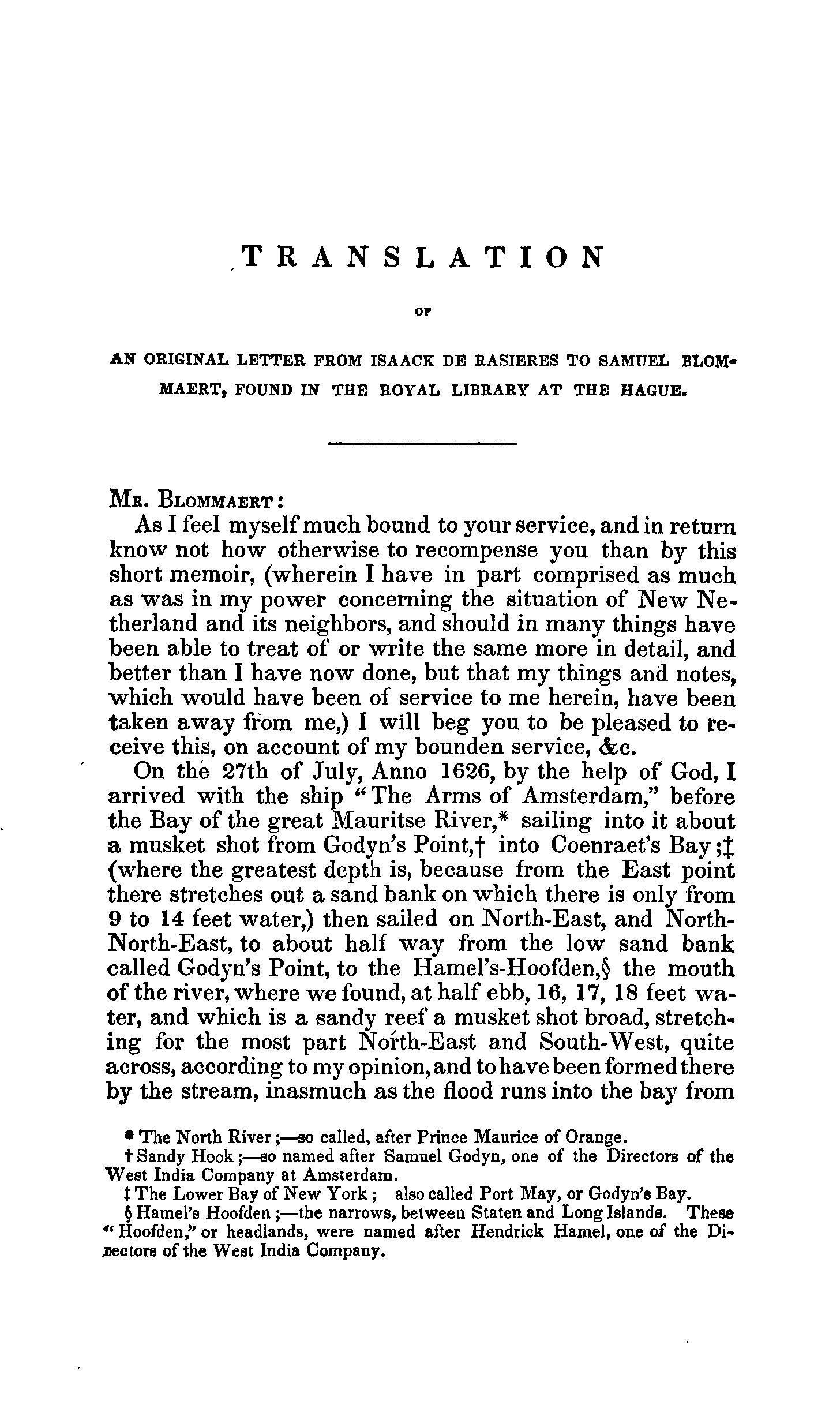As I feel myself much bound to your service, and in return know not how otherwise to recompense you than by this slight memoir, (wherein I have in part comprised as much as was in my power concerning the situation of New Netherland and its neighbors, and should in many things have been able to treat of or write the same more in detail, and better than I have now done, but that my things and notes, which would have been of service to me herein, have been taken away from me), I will beg you to be pleased to receive this, on account of my bounden service, etc. On the 27th of July, Anno 1626, by the help of God, I arrived with the ship, The Arms of Amsterdam, before the bay of the great Mauritius River, sailing into it about a musket shot from Godyn’s Point, into Coenraet’s Bay (because there the greatest depth is, since from the east point there stretches out a sand bank on which there is only from 9 to 14 feet of water); then sailed on, northeast and north-northeast, to about half way from the low sand bank called Godyn’s Point to the Hamels-Hoofden, the mouth of the river, where we found at half ebb 16, 17, 18 feet water, and which is a sandy reef a musket shot broad, stretching for the most part northeast and southwest, quite across, and, according to my opinion, having been formed there by the stream, inasmuch as the flood runs into the bay from the sea, east-southeast; the depth at Godyn’s Point is caused by the tide flowing out along there with such rapidity. Between the Hamels-Hoofden the width is about a cannon’s shot of 2,000; the depth 10, 11, 12 fathoms. They are tolerably high points, and well wooded. The west point is an island, inhabited by from eighty to ninety savages, who support themselves by planting maize. The east point is a very large island, full 24 leagues long, stretching east by south and east-southeast along the sea-coast, from the river to the east end of the Fisher’s Hook. In some places it is from three to four leagues broad, and it has several creeks and bays, where many savages dwell, who support themselves by planting maize and making sewam and who are called Siwanoys and Shinnecocks. It is also full of oaks, elms, walnut and fir trees, also wild cedar and che stnut trees. The tribes are held in subjection by, and are tributary to, the Pyquans, hereafter named. The land is in many places good, and fit for plowing and sowing. It has many fine valleys, where there is good grass. Their form of government is like that of their neighbors, which is described hereafter.


